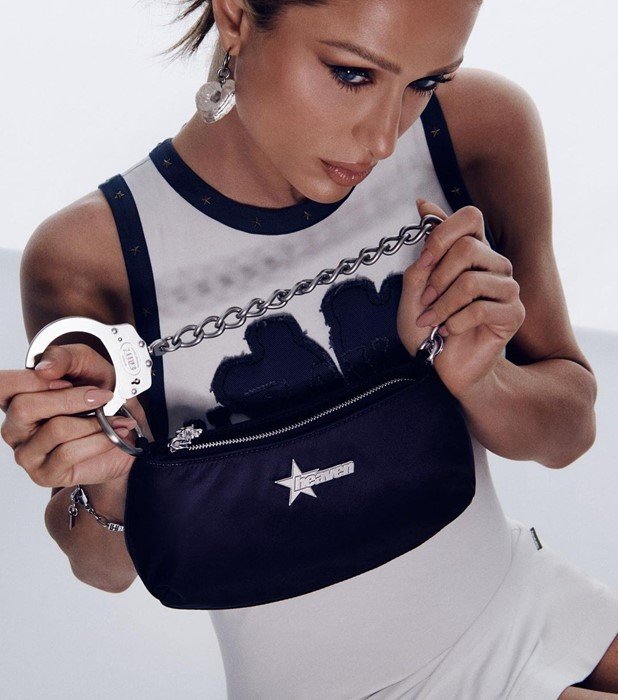The Inevitable Demise of the It Girl
Alexa Demie photographed by Bryce Anderson, 2021
The “It Girl” has become a significant social fascination since the dawn of human aristocrats, but its prominence skyrocketed when Jennifer Lopez single-handedly influenced the creation of Google Images wearing that iconic Versace Spring/Summer 2000 dress. For young, age-defying women, TikTok and Instagram expose them to a constant stream of content centered around this over-exposed archetype. This content delves into who the It Girl is now and her generation, from what she wears at high-profile events to how girls can emulate her beauty or unique look. Exploring the world of the It Girl on social media will introduce you to a vibrant community of internet personalities, ranging from Y2K-inspired self-styled influencers to small-scale fame within the fashion scene of New York City and London, inspiring women to become a version of them. It is essential to acknowledge that the obsession with the It Girl is not solely a product of the internet era. The fascination with these iconic figures has existed long before the advent of online platforms. Its character captures the attention of a specific generation in pop culture that carries significant cultural significance. With Marilyn Monroe and her iconic old Hollywood archetype, our understanding of the 1950s is enriched as she continues to be the poster child of vintage American cinema. In contrast, Chloë Sevigny’s stargazing appeal cements her as the epitome of ‘90s youth culture and defiance, with iconic cult films like "Kids" (1995) and "Gummo" (1997). These two women embody two different celebrity types, yet each could be seen as an “It Girl” – one for being immortal and the other for being a counterculture icon.
Courtesy of Heaven
Whether it's Edie Sedgwick, Kidada Jones, Bianca Jagger, or Alexa Chung, these women act as a prism through which we perceive their world through the guise of female anonymity. Who is she, and what is she about? She reflects the surrounding culture and plays a pivotal role in shaping it, illustrating what it means to be a known socialite regardless of elite status. While some are born into wealth, others are not. Everyone aspires to be like her, yet her elusiveness defines her – no one knows much about her and is curious about how she became such a figure in her social group. Some girls are more overexposed than others; some could be famous singers, or some become famous in less than honorable ways. One thing these women have in common is that they're usually the “It Girl” from early adulthood, as their fame does not last forever. These women capture the attention and admiration of others by showcasing a side of them that differs from the average without calling for desperate attention, as opposed to Kim Kardashian and Paris Hilton. They don’t have to be born into wealth, but by showcasing glamor, allure, sensuality, and uniqueness of social fame and status, they can catapult themselves to It Girl status. Certain qualities have become less prevalent recently, making such candor and appeal harder to achieve today. However, some It Girls worth mentioning of this generation are Alexa Demie, Taylor Russell, Lori Harvey, Emma Chamberlain, and Lily-Rose Depp. Whether these ladies own the title is debatable since they might be mere products of vacuous celebrity phenomena or the oversaturated high-fashion machine. The essence of being effortless, aloof, calm, attractive, and sometimes a trendsetter contributes to their fame. “She” seems to live without seeking attention, yet part of her appeal lies in the fact that she always manages to attract it effortlessly. As consumed by everyone, The It Girl embodies an idealized version of self that most wish to emulate. Consequently, attempting to project the standard of the It Girl persona contradicts the term, thus diminishing who can be considered one. Matthew Schneier, for The Cut, states that the point of being “it” means fading into obscurity at some point, and the goal is not to become a popularized has-been celebrity.
Marilyn Monroe
Oversaturation and Invisibility
The scarcity of the It Girl persona has always been a fundamental aspect of its cultural allure within famous Western society. The concept would lose its essence if anyone could become an It Girl, as we see nowadays. If everyone is an It Girl, then no one is. We are inundated with content of "it girls" that causes us to idolize people even if the life they're showcasing is fabricated. There are numerous different girls that people admire. However, the oversaturation of girls has become diluted as everyone seems to conform to the same standards of makeup and fashion for virality and fame. Marilyn Monroe emerged to be very different from the average ‘50s housewife. She stood out, especially because she appeared as a cultural phenomenon and enigma, with her untimely death cementing her into immortal consciousness. With the zeitgeist becoming widespread as we are constantly pushed with content, the term holds no longer weight. TikTok exposure is the norm, and it becomes evident why the offline and unpretentious persona of the It Girl is both idolized and unattainable. We can’t help but be overly exposed to the internet, and our addiction to it causes us to overshare and reveal more than we would wish. The allure of the It Girl fantasy lies in the notion of liberation that being a public spectacle and walking advertisement is not the requirement or the criteria.



